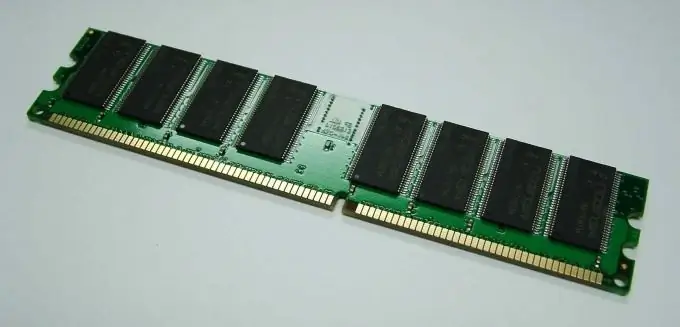Random access memory significantly affects the performance of a computer, and sometimes it becomes necessary to install an additional memory module or replace one that has stopped working. You can completely cope with this on your own and not contact specialists.

Instructions
Step 1
In order to install RAM in a computer or laptop, you should first of all select the memory that matches the parameters of your motherboard, if you have a system unit, or the technical characteristics of the model, if you have a laptop. After you have bought the desired RAM bar, you can proceed with the installation.
Step 2
To install in a laptop, the sequence of actions will be as follows:
1. Turn off the laptop by closing the lid, turn it upside down and place it on the table.
2. Carefully inspect the laptop case and find the places where, by removing a few screws, you can get to the inside of the laptop. For different models, the size of such "windows" closed with lids may differ, so by trial find the window you need, opening which you will see the same memory bar as the one you bought.
3. Carefully remove the old strip if you are replacing, or simply add a new one to the existing one if you are adding memory. Do not leave an old, non-working memory module in its place if there is a free slot next to which you inserted a new memory strip - the computer will not turn on!
4. Close the lid of the RAM compartment, remembering to screw the guilt into place.
5. Everything is ready, you can use it.
Step 3
To install memory in the system unit, you should proceed as follows:
1. Disconnect all wires (keyboard, mouse, monitor, LAN, speakers, power cord, etc.), and remove the left side cover of the system unit. In order to remove the cover, you will need to unscrew a few screws, or loosen the latches.
2. By opening the left side cover, you can access the contents of your computer. On the motherboard, find the RAM modules that match the ones you have, and add a new memory strip, or replace the old one with a new one. As a rule, the motherboard has several slots where you can insert memory, however, if one of the old modules is out of order, in no case leave it on the board - the computer will not work!
3. Assemble everything in reverse order, and start the computer.






